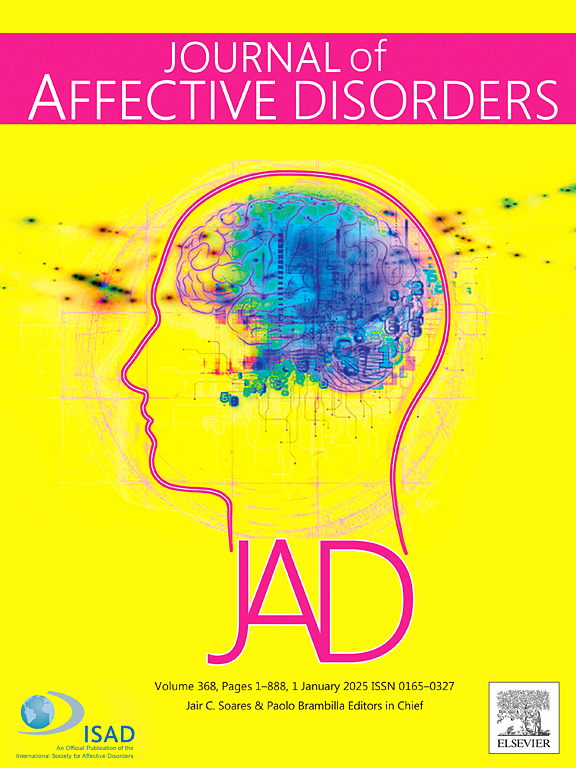The different mediation role of habit features between intolerance of uncertainty and psychopathological symptom dimensions: A transdiagnostic perspective
IF 4.9
2区 医学
Q1 CLINICAL NEUROLOGY
引用次数: 0
Abstract
Background
Intolerance of uncertainty (IU) is a transdiagnosed vulnerability for many mental disorders. Habit is a potential cognitive construct that links to intolerance of uncertainty and symptom dimensions. This study adopted a transdiagnose perspective to investigate the mediation effect of habit features between symptom dimensions and intolerance of uncertainty in a Chinese community sample.
Methods
We recruited 4102 Chinese adults age ranged from 18 to 67 (M = 26.9, SD = 8.01) to extract psychopathological symptom dimensions and explore the mediation roles of habit features.
Results
The study extracted three symptom dimensions (compulsivity, addiction and affective stress dimension). All symptom dimensions, IU and habit features were significantly related (p < 0.01). IU had a direct positive influence on all three dimensions (compulsivity: effect = 0.41; affective stress: effect = 0.58; addiction: effect = 0.13), it lso have an indirect positive impact via habit feature of automaticity (compulsivity: effect = 0.095; affective stress: effect = 0.062; addiction: effect = 0.050). Additionally, IU can positively influence compulsivity dimension (effect = 0.053) and negatively affective stress (effect = −0.026) dimension through routine feature of habit.
Conclusions
Higher level of IU can intensify symptom dimension by habit feature of automaticity, while habit feature of routine can alleviate affective stress dimension and aggravate compulsivity dimension.
背景:对不确定性的不容忍(IU)是许多精神障碍的转诊易感性。习惯是一种潜在的认知结构,它与不确定性不耐受和症状维度相关联。本研究采用转诊断视角,在中国社区样本中调查习惯特征在症状维度和不确定性不耐受之间的中介效应:方法:我们招募了 4102 名年龄介于 18 岁至 67 岁(中=26.9,标差=8.01)的中国成年人,提取精神病理症状维度,并探讨习惯特征的中介作用:研究提取了三个症状维度(强迫性、成瘾性和情感压力维度)。所有症状维度、IU 和习惯特征均有显著相关性(p 结论:IU 越高,症状越严重:较高水平的 IU 可以通过自动性的习惯特征强化症状维度,而常规性的习惯特征可以减轻情感压力维度并加重强迫性维度。
本文章由计算机程序翻译,如有差异,请以英文原文为准。
求助全文
约1分钟内获得全文
求助全文
来源期刊

Journal of affective disorders
医学-精神病学
CiteScore
10.90
自引率
6.10%
发文量
1319
审稿时长
9.3 weeks
期刊介绍:
The Journal of Affective Disorders publishes papers concerned with affective disorders in the widest sense: depression, mania, mood spectrum, emotions and personality, anxiety and stress. It is interdisciplinary and aims to bring together different approaches for a diverse readership. Top quality papers will be accepted dealing with any aspect of affective disorders, including neuroimaging, cognitive neurosciences, genetics, molecular biology, experimental and clinical neurosciences, pharmacology, neuroimmunoendocrinology, intervention and treatment trials.
 求助内容:
求助内容: 应助结果提醒方式:
应助结果提醒方式:


